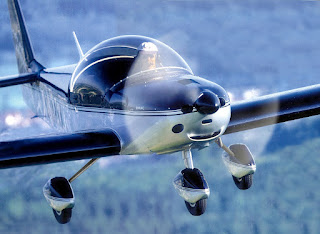The Pilatus PC-6 Porter is a single-engined Short Take-Off and Landing (STOL) utility aircraft designed by Pilatus Aircraft of Switzerland. First flown in 1959, the PC-6 has been built in both piston engine and turboprop powered versions, and has been built both by Pilatus and by Fairchild Hiller in the United States. It remains in production as of August 2011.
Design and development
The first prototype made its maiden flight on 4 May 1959 powered by a 254 kW (340-shp) piston engine. The first Turbo Porter, powered by a turboprop, flew in 1961. The Turbo Porter received an engine upgrade in 1963, which increased its power to its present value of 410 kW (550-shp).
In the United States, the Porter was manufactured under license by Fairchild Hiller. In service with the U.S. Air Force, it received the designation AU-23A Peacemaker. In U.S. Army use, it was designated UV-20 Chiricahua.
Operational history
The PC-6 is noted for its Short Take-off and Landing (STOL) performance on almost any type of terrain - it can take off within a distance of 640 feet (195 m) and land within a distance of 427 feet (130 m) while carrying a payload of 2,646 lbs (1,200 kg). Thanks to its STOL performance, the PC-6 holds the world record for highest landing by a fixed wing aircraft, at 18,865 feet (5,750 m), on the Dhaulagiri glacier in Nepal.
Due to these characteristics, they are frequently used to access short grass mountaintop airstrips in the highlands of Papua Province (Indonesia) and Papua New Guinea.
Variants
PC-6/340 Porter
Initial production version, powered by a 254-kW (340-hp) Lycoming GSO-480-B1A6 flat-six piston engine. Max take-off weight 1,070 kg (2,360 lb).
PC-6/340-H1 Porter
As PC-6/340, but with modified landing gear and increased weight (2,016 kg (4,444 lb)).
PC-6/340-H2 Porter
As for H-2, but with maximum take-off weight increased to 2,200 kg (4,850 lb).
PC-6/350
As PC-6/340, but powered by a 261 kW (350 hp) Lycoming IGO-540-A1A piston engine.
PC-6/350-H1
As for /340 H1 but with O-540 engine.
PC-6/350-H2
As for 340 H2 with O-540 engine.
PC-6/A Turbo-Porter
Initial turboprop powered version, fitted with a 390 kW (523 shp) Turboméca Astazou IIE or IIG turboprop engine.
PC-6/A1 Turbo-Porter
This 1968 version was powered by a 427-kW (573-shp) Turbomeca Astazou XII turboprop engine.
PC-6/A2 Turbo-Porter
This 1971 version was powered by a 427-kW (573-shp) Turbomeca Astazou XIVE turboprop engine.
PC-6/B Turbo-Porter
This version was powered by a 410-kW (550-shp) Pratt & Whitney Canada PT6A-6A turboprop engine.
PC-6/B1 Turbo-Porter
Similar to the PC-6/B, but fitted with a 410-kW (550-shp) Pratt & Whitney Canada PT6A-20 turboprop engine.
PC-6/B2-H2 Turbo-Porter
Fitted with a 507-kW (680-shp) Pratt & Whitney Canada PT6A-27 turboprop engine.
PC-6/B2-H4 Turbo-Porter
The B2-H4 has improved airframe structuring and extended, upturned wingtips.
PC-6/C Turbo-Porter
One prototype built by Fairchild Industries in the USA, powered by a 429-kW (575-shp) Garrett TPE331-25D turboprop engine.
PC-6/C1 Turbo-Porter
Similar to the PC-6/C, but fitted with a 429-kW (575-shp) Garrett TPE 331-1-100 turboprop engine.
PC-6/C2-H2 Porter
Developed by Fairchild Industries in the USA. It was powered by a 485-ekW (650-ehp) Garrett TPE 331-101F turboprop engine.
PC-6/D-H3 Porter
One prototype, fitted with a 373-kW (500-hp) avco Lycoming turbocharged piston engine.
AU-23A Peacemaker
Armed gunship, counter-insurgency, utility transport version for the U.S. Air Force. It was used during the Vietnam War in the early 1970s. 35 were built under licence in the USA by Fairchild Industries. All aircraft were sold to Royal Thai Air Force.
OV-12
Designation for U.S. version, cancelled 1979.
UV-20A Chiricahua
STOL utility transport version for the U.S. Army. Two UV-20As were based in West Berlin during the 1970s and 1980s.
PC-8 Twin Porter
Twin-engined version flown in 1967, but not subsequently developed.
Specifications (PC-6 B2 Turbo-Porter)
General characteristics
Crew: one, pilot
Capacity: up to ten passengers
Payload: 1,130 kg (2,491 lb)
Length: 11.00 m (36 ft 1 in)
Wingspan: 15.87 m (52 ft 0¾ in)
Height: 3.20 m (10 ft 6 in)
Wing area: 30.15 m² (324.5 sq ft)
Airfoil: NACA 64-514
Aspect ratio: 8.4:1
Empty weight: 1,270 kg (2,800 lb)
Max. takeoff weight: 2,800 kg (6,173 lb)
Powerplant: 1 × Pratt & Whitney Canada PT6A-27 turboprop, 410 kW (550 shp)(downrated from 507 kW (680 shp))
Performance
Never exceed speed: 280 km/h (151 knots, 174 mph)
Maximum speed: 232 km/h[15] (125 knots, 144 mph)
Cruise speed: 213 km/h (115 knots, 132 mph) at 3,050 m (10,000 ft)
Stall speed: 96 km/h (52 knots, 60 mph) (flaps down, power off)
Range: 730 km (394 nmi, 453 mi) with maximum payload
Ferry range: 1,612 km (870 nmi, 1,002 mi) with maximum internal and underwing fuel
Service ceiling: 8,197 m (25,000 ft)
Rate of climb: 4.8 m/s (941 ft/min)
Regards,
Heena Mathur[B.Sc(CS)MBA(HR)]
HR Executive
On Line Assistence :
Gtalk : Heena.aerosoft@gmail.com
Y! Messenger : Heena.aerosoft@yahoo.com
Rediff Bol : Heena.aerosoft@rediffmail.com
Technical Support Associate for International BPO ...
Jan 28, 2013 – Technical Support Associate for International BPO Process Urgent... Urgent Openings for Indore [ MP ] and Jaipur [ Raj ] Location Only ...




























No comments:
Post a Comment